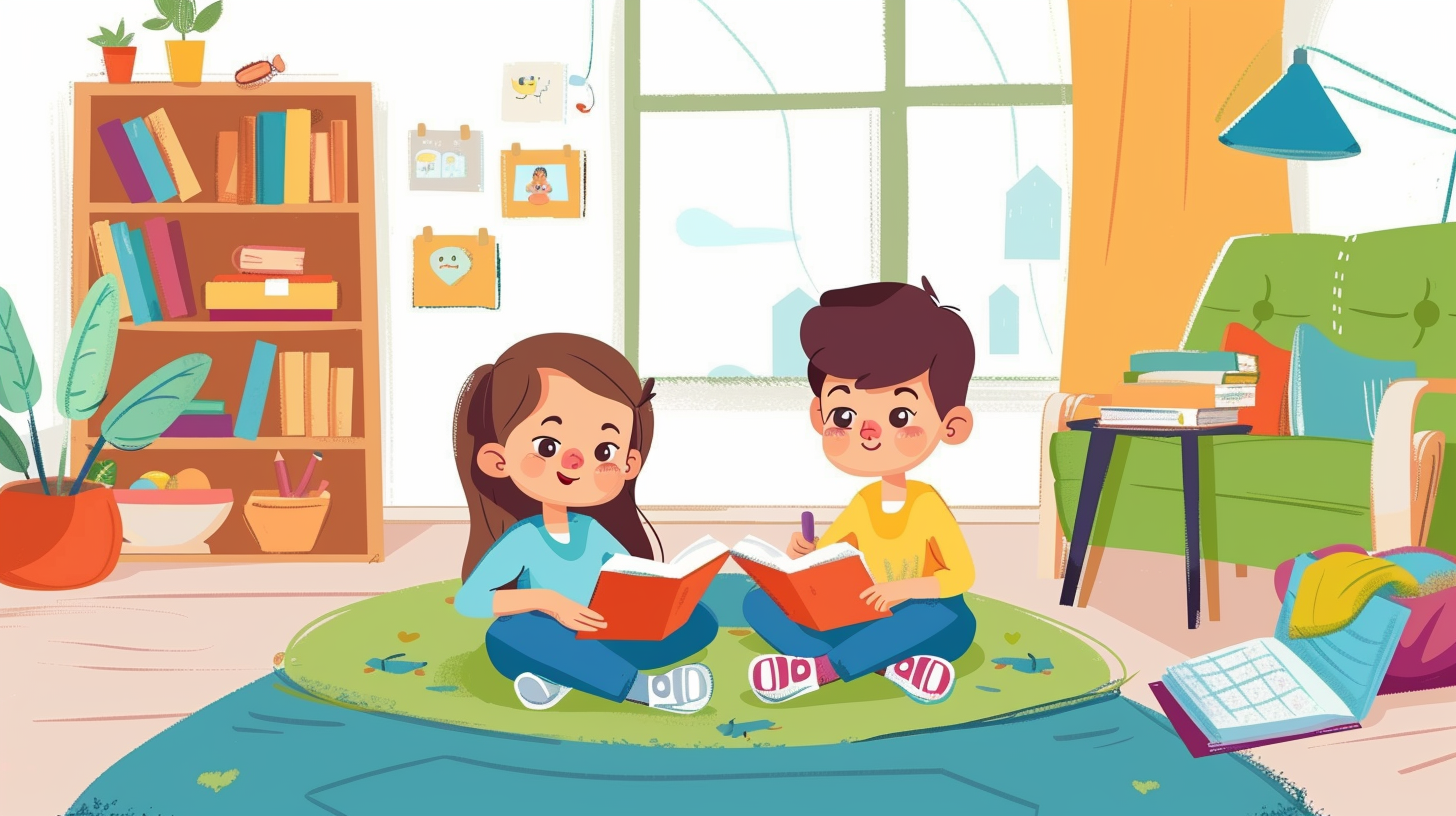Want to help your students master digraphs and blends?
Teaching these crucial phonics skills can be challenging, and students often struggle to apply them in their daily reading and writing.
Discover simple, engaging activities that seamlessly integrate digraphs and blends into your literacy lessons, empowering your students to become confident readers and writers!
What are Digraphs and Blends?
Digraphs and blends are two essential components of phonics instruction that are crucial in developing strong literacy skills.
Digraphs are combinations of two letters that produce a single sound.
On the other hand, blends are combinations of two or more letters where each letter retains its sound.
Some common examples of digraphs and blends in simple words include:
| Category | Examples | Common Words |
|---|---|---|
| Digraphs | ch | chair, cheese |
| sh | ship, fish | |
| th | that, with | |
| wh | when, where | |
| ph | phone, graph | |
| Blends | bl | black, blue |
| cl | class, clock | |
| fl | flower, fly | |
| gr | green, grow | |
| pr | print, price | |
| st | star, stop | |
| tr | tree, truck |
Below are steps on how to integrate digraphs and blends into daily literacy activities:
Stage 1: Awareness and Recognition
The primary goal at this stage is to help learners recognize digraphs and blends in isolation before integrating them into words.
Key Concepts
It is important to reinforce the definitions of digraphs and blends to ensure a clear understanding:
- Digraphs: Two letters that come together to make a single, distinct sound (e.g., “sh,” “ch,” “th”)
- Blends: Two or more letters that are blended, but each letter retains its sound (e.g., “bl,” “gr,” “st”)
Practical Activities
Engage students in activities that focus on recognizing digraphs and blends in isolation:
- Use flashcards showing letters that form digraphs and blends, and ask students to pronounce the sounds
- Play “I Spy” games where children identify digraphs and blend in a set of letter cards
- Create a “Digraph and Blend Bingo” game where students match the sounds to the corresponding letter combinations
Stage 2: Introduction and Exploration
This stage aims to solidify the recognition of digraphs and blends through interactive and engaging methods.
1. Interactive Techniques
Hands-on Learning Centers
Set up stations throughout the classroom where students can engage with materials that highlight different digraphs and blends:
- Sorting games where children categorize words or pictures based on their beginning or ending sounds
- Building words using letter blocks or tiles, focusing on creating words with specific digraphs or blends
- Matching games where students pair cards featuring words or images with the corresponding digraph or blend
Technology Integration
Incorporate digital resources to provide additional opportunities for interactive learning:
- Use interactive whiteboards to play games or activities that require students to identify or match digraphs and blends
- Utilize tablet apps that allow students to manipulate letters to form blends and digraphs, providing immediate feedback and reinforcement
- Create digital scavenger hunts where children search for examples of digraphs and blends in online texts or images
2. Application Through Games and Activities
Games
Implement specific games that target digraph and blend recognition and manipulation:
- Memory games where students match cards with the same digraph or blend
- Hop-scotch style games where children jump to the correct digraph or blend based on the sound the teacher pronounces
- Word ladders that require students to change one letter at a time to create new words, focusing on adding or removing digraphs and blends
Physical Materials
Utilize tactile resources to reinforce the physical aspect of learning:
- Provide letter tiles or magnets for students to construct words containing digraphs and blends
- Use play-doh or clay to form letters and physically blend them to create digraphs and blends
- Encourage students to trace digraphs and blends in sand, shaving cream, or finger paint to engage their senses while learning
Stage 3: Practice and Reinforcement
1. Purpose of Structured Practice
Systematic and regular practice is crucial for mastering phonics, particularly digraphs and blends. Students can improve their reading fluency and decoding skills by engaging in structured practice activities and becoming more confident and proficient readers.
Making practice sessions enjoyable and engaging is essential to maintaining student interest and motivation, which will lead to better learning outcomes.
2. Core Activities
Phonics Ladders
Phonics ladders are a valuable tool for gradually increasing the difficulty of practice activities. Begin by focusing on simple blends, such as “bl,” “gr,” or “st,” and progressively move towards more complex digraphs like “sh,” “ch,” or “th.”
This approach allows students to build confidence and skills in a structured manner, preventing frustration and ensuring a positive learning experience.
Decodable Passages
Introduce passages carefully crafted to include a high concentration of digraphs and blends tailored to the student’s current learning stage.
These passages provide authentic reading practice while reinforcing the targeted phonetic elements. As students read the passages, they will encounter digraphs and blends in context, helping them develop fluency and comprehension skills.
Stage 4: Application in Context
Integrating digraphs and blends into reading and writing activities aims to promote practical application and comprehension.
1. Reading Applications
Mini Books
Create mini books containing focused blends and digraphs, providing students with manageable and confidence-building reading practice.
These books should feature engaging stories or informational texts that showcase the targeted phonetic elements in a meaningful context.
As students read through the mini books, they will be familiar with digraphs and blends while developing their reading skills.
Fluency Passages
Design fluency passages that incorporate digraphs and blends to help students improve their reading speed, accuracy, and expression.
These passages should be leveled appropriately, allowing students to progress at their own pace. By regularly practicing with fluency passages, students will develop automaticity in recognizing and decoding words containing the targeted phonetic elements.
2. Writing Applications
Sentence Building Exercises
Develop exercises where students construct sentences using words that include the target digraphs and blends. These exercises can be scaffolded, beginning with simple sentence structures and progressively moving towards more complex ones.
By actively creating sentences, students will enhance their creative and structured writing skills while reinforcing their understanding of digraphs and blends.
Practical Writing Tasks
Engage students in practical writing tasks, such as journal entries or short stories, that encourage using words containing digraphs and blends. These tasks provide opportunities for students to apply their phonics skills in a context that is meaningful and relevant to their lives.
Students will reinforce their learning by incorporating the targeted phonetic elements into their writing and demonstrating their ability to use these skills in practical situations.
Stage 5: Advanced Application
The primary objective of the advanced application is to enhance reading fluency and comprehension among students using texts that incorporate digraphs and blends.
1. Developing Reading Fluency
Fluency-Focused Activities
Introduce activities to increase reading speed and accuracy with texts containing numerous digraphs and blends.
These activities may include timed reading exercises, where students track their progress in reading a passage within a set time limit, or partner reading, where students take turns reading aloud and providing feedback to one another.
Repeated Reading Practice
Implement the repeated reading method, which involves having students read the same passage multiple times to improve their speed, accuracy, and expression.
As students become more familiar with the text, digraphs, and blends within it, they will develop greater automaticity and fluency in reading.
2. Enhancing Comprehension
Contextual Reading Strategies
Integrate digraphs and blends within longer text passages and stories to boost understanding and comprehension.
Encourage students to use context clues and their phonics knowledge to decode unfamiliar words and make meaning from the text. Provide opportunities for students to discuss the stories they read, sharing their insights and questions with their peers.
Guided Reading and Discussion
Conduct guided reading sessions where teachers lead small groups of students through a text, posing questions that promote deeper comprehension.
These questions should focus on key elements of the story, such as character motivations, plot developments, and themes, while also drawing attention to the digraphs and blends used in the text.
Encourage students to engage in thoughtful discussion and to support their ideas with evidence from the reading.
Stage 6: Assessment and Remediation
The main objective of ongoing assessment is to maintain a systematic approach to evaluating student mastery of digraphs and blends.
This involves using various assessment strategies, both formal and informal, to gather data on student performance and adjust instruction accordingly.
1. Assessment Strategies
Formal Assessments
Implement formal assessments, such as quizzes and written tests, focusing on digraphs and blends. These assessments should evaluate students’ ability to recognize, read, and write words containing the targeted phonetic elements.
Be sure to include various question types, such as multiple-choice, fill-in-the-blank, and short answer, to assess student understanding.
Informal Assessments
Utilize informal assessment techniques, such as observation and oral reading evaluations, to gauge student progress during class activities.
Pay close attention to students’ ability to decode words with digraphs and blends, as well as their fluency and comprehension when reading texts that incorporate these elements.
Keep detailed notes on individual student performance to inform future instruction and remediation efforts.
2. Remediation Techniques
Targeted Support
Provide targeted remediation activities for students who are struggling with digraphs and blends.
This may involve small group tutoring sessions, where the teacher works closely with a few students to address specific challenges, or one-on-one coaching, where students receive individualized support and guidance.
Customized Activities
Design customized remedial exercises focusing on the specific digraphs and blends students find challenging. These activities should be engaging and interactive, allowing students to practice their skills in a supportive environment.
For example, you might create a series of word sorts that focus on a particular digraph or develop a set of flashcards that target specific blends.
By tailoring remediation to individual student needs, you can help them overcome obstacles and make steady progress in their reading development.
Significance of Digraphs and Blends in Learning
- Role in Phonics: Understanding digraphs and blends is vital for developing phonemic awareness and recognizing and manipulating individual sounds in spoken words. This skill is a key predictor of reading proficiency, as it helps students decode unfamiliar words and read with greater accuracy.
- Impact on Fluency: As students master digraphs and blends, they become more adept at recognizing common letter patterns and sounding out words quickly. This improves reading fluency, allowing students to read with better pace, expression, and comprehension. When students can effortlessly navigate through words containing digraphs and blends, reading becomes a more enjoyable and rewarding experience.
Conclusion
Integrating digraphs and blends into daily literacy activities is essential for developing strong reading and writing skills.
By engaging students in interactive, multi-sensory experiences that focus on these crucial phonetic elements, teachers can help learners build a solid foundation for future success.
Remember, the key is to make learning fun and engaging while providing ample opportunities for practice and application in authentic contexts. As students progress, continue to assess their understanding and provide targeted support when needed.
By following these strategies and maintaining a systematic approach, you’ll be well on your way to helping your students become confident, fluent readers and writers.
So, what’s next? Start incorporating these activities into your daily routine and watch your students’ literacy skills soar!
If you found this post helpful, share it with your fellow educators.
Frequently Asked Questions
How to Practice Blends and Digraphs?
Practice blends and digraphs through word sorts, matching games, and reading decodable texts focusing on specific sound patterns.
How to Help A Student with Digraphs?
Provide explicit instruction, practice identifying digraphs in isolation and within words, and offer targeted support through activities like sound-letter matching and word-building exercises.









